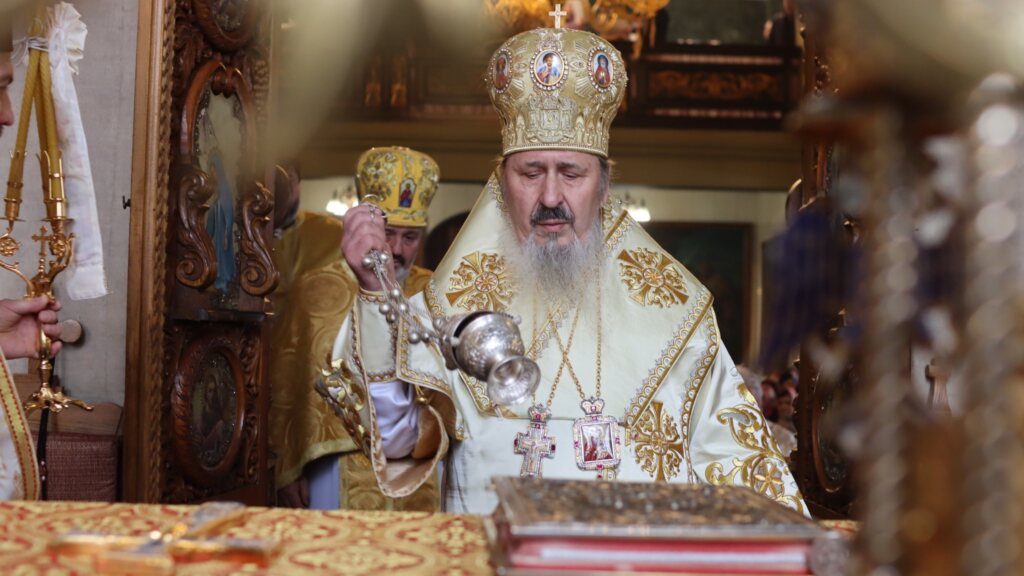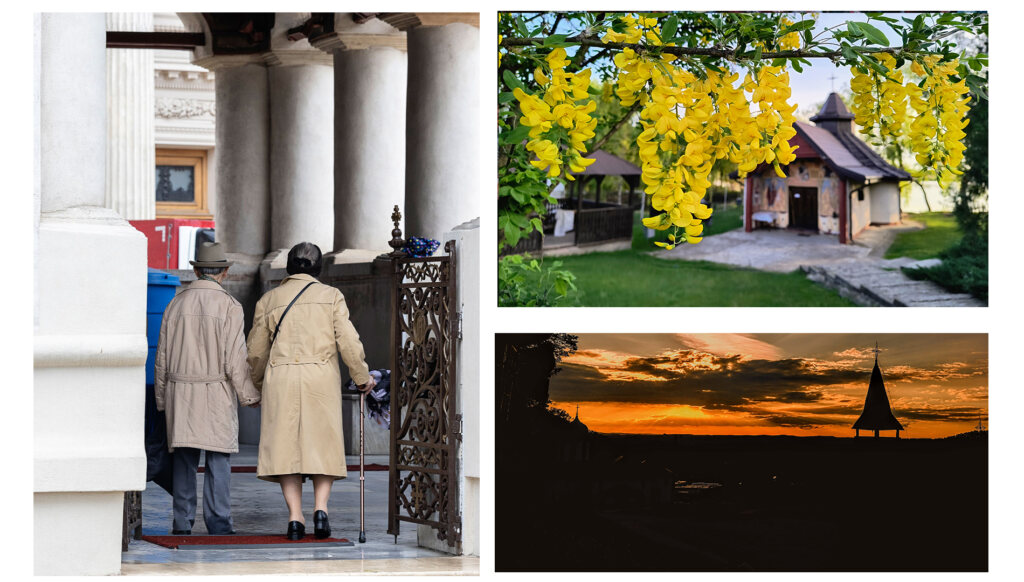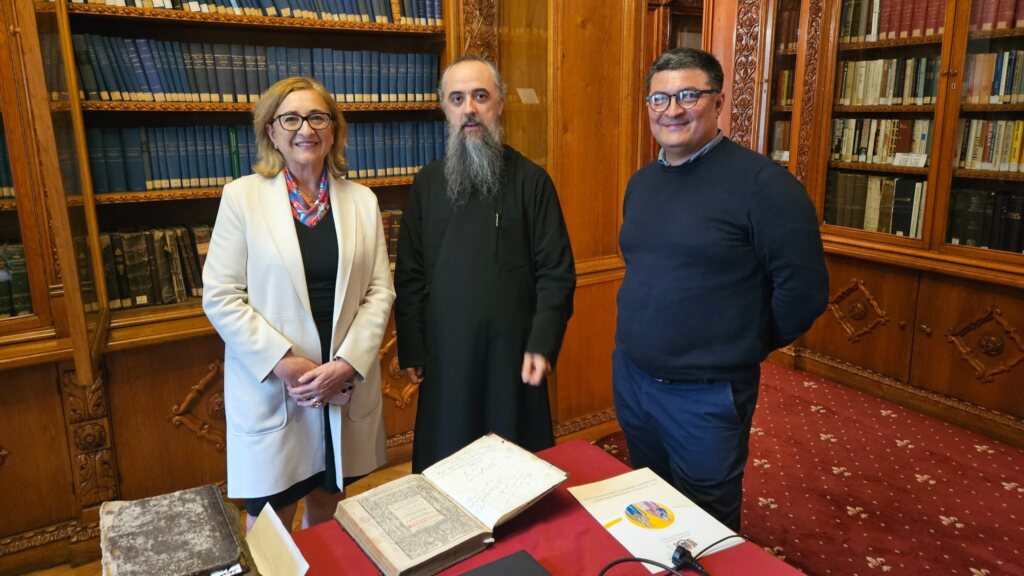The newest Romanian saint, a hierarch from Bessarabia who was glorified in 2018, and the “Saintie” who died for Christ at the age of 12, will soon be the “guests” of Saint Demetrios the New at the annual procession honouring the spiritual protector of Bucharest.
The relics of Saint Dionysius, Bishop of Cetatea Alba and Ismail, and of Saint Philothea of Arges will be carried in procession on the streets of Bucharest joining the relics of St Demetrios the New on Friday.
But who are these two “Guests of Honour” of Saint Demetrios and what do they represent for Romanian Orthodoxy?
Saint Dionysios Erhan
He was baptised Demetrios
Bishop Dionysius Erhan was baptised under the name of Dimitrie (Demetrios), the name of Dionysius was received at his monastic tonsure.
Providentially, the official declaration of his sainthood will take place on the feast day of Saint Demetrios the New.
He was born in 1868 in the village of Bardar, 15 km away from Chisinau, in a family with limited material possibilities. At the age of 15, feeling the longing for God and the desire to wear the monastic habit, the young Dimitrie entered Suruceni Monastery.
From the beginning, the novice Dimitrie was eager to learn the holy things and very keen on knowledge, striving to form a theological background by reading the Holy Scriptures and the works of the Holy Fathers, who were his guides in life and a firm support in the moments of turbulence in his personal life and the history of the Romanian nation.
Becoming outstanding through his spiritual life, through gentleness, but also firmness and dignity in defending the nation and the Orthodox faith, through the culture he acquired as a self-taught man and by the appreciation of the believers, in 1908, he was elected abbot of the monastery, notes Bishop Veniamin, the one who submitted to the Holy Synod the canonization proposal.
A hierarch of the Great Union
Glorified by the Synod of the Romanian Orthodox Church one hundred years after the Great Union, Saint Dionysius was a fervent activist for the realization of this national ideal. Over 80% of the members of the Country Counsel had him as a spiritual father and director.
Under these conditions, in the year of the Great Union (1918), Elder Dionysius from Suruceni became a bishop. He was elected on July 22, 1918 assistant bishop to the Archdiocese of Chisinau and Hotin, with the title “Bishop of Ismail”, being ordained at the Metropolitan Cathedral of Iași.
Later, in 1934, he became a Bishop of Cetatea Alba and Ismail, where he shepherded for six years.
He was appreciated by contemporary personalities such as the great historian Nicolae Iorga and theology professors Gala Galaction and Nichifor Crainic.
After the Ribbentrop-Molotov pact and the ceding of Bessarabia, he took refuge in Romania, being appointed locum tenes of the Diocese of Argeș during 1940-1941. Later, he returned to his monastery at Suruceni, and reposed in the Lord on September 17, 1943, at the Central Hospital of Chisinau.
Discovering the relics of Saint Dionysius
The body of Bishop Dionisie Erhan was found to be incorrupt during some consolidation works carried out at Suruceni Monastery on July 10, 2018.
The uncovering of his relics, his special intellectual and moral qualities, as well as the fact that he was a good connoisseur of the Holy Scriptures and the worship books, a famous spiritual director, a champion of the well-being of Romanians in Bessarabia and supporter of the affirmation of the national values contributed to the resolution of the Holy Synod of the Romanian Orthodox Church to include Bishop Dionysius among the saints’ choirs.
Saint Philothea
Saint Philothea among the Romanian Saints
We see her represented in icons dressed in Romanian folk costume specific to the Argeș area and we often hear her invoked in prayers together with the Romanian and pre-Romanian saints although she was born in the Bulgarian city of Tarnovo.
In fact, the Saintie (“Sfântulița”), as she is called by local people, had a Vlach origin according to her mother line, being born on the south side of the Danube River during the Vlach–Bulgarian Empire (Second Bulgarian Empire).
The young girl suffered martyrdom at the age of 12 has been honoured by Romanians from ancient times.
The Synaxaria indicate that she wished to be ‘adopted’ by the Princely Church at Curtea de Arges.
Killed by mistake, in anger, by her own father because she distributed her father’s food to the poor, the Saintie’s body became unnaturally heav and could only be lifted from the ground by the invoking the name of the then capital city of Wallachia, Curtea de Argeș.
Basically, according to historical evidence, it seems that the relics of the saint arrived in Romania later.
St. Philotea was first brought to St Demetrios Church
The body of Saint Philothea was buried in the courtyard of St. Nicholas Church in Tarnovo, close to her mother’s tomb. Later, because of the miracles that were happening at her tomb, the Saint’s remains were removed and placed in a reliquary, which was followed by her glorification.
It was not until 1393, when the Ottomans occupied the Tarnovo Fortress, that the relics of the saint were taken for a while to Vidin and from there they were bought by the Ruler Prince Mircea the Elder, who, together with Metropolitan Athanasius of Severin, brought them to Wallachia, writes Fr Ioan Ioanicescu in an article for Lumina Newspaper in 2012.
In this context, after being brought to Wallachia, the relics of Saint Philothea remained for three days at the church of St Demetrios at the princely residence in Craiova.
The church was dedicated to Saint Demetrios, who is considered the patron saint of Mircea the Elder and his family (as the name “Mircea” would derive from “Demetrios” or “Mitru”).
The name of Saint Philothea derives from the Ancient Greek name “Philótheos (Φιλόθεος)”, composed of two elements: “phílos (φίλος)” (beloved, dear, loving, friendly) plus “theós (θεός)” (divine, a deity, a god, God). In turn the name means “friend of God”.
The relics of Saints Philothea and Dionysius will remain in Bucharest for veneration on October 25-29, 2019.
Photo: Basilica.ro
Follow us on Twitter: @BasilicaNews






